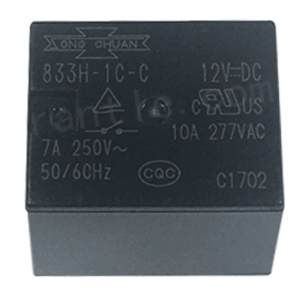
Network Integrated Circuits ( ICs) are the backbone of modern communication systems, enabling devices to connect, transmit, and process data across wired and wireless networks. From smartphones to data centers, these specialized chips play a pivotal role in managing network protocols, ensuring efficient data flow, and maintaining robust connectivity. This article dives deep into the architecture, types, applications, and future trends of network ICs.
Table of Contents
ToggleWhat Are Network ICs?
Network ICs are semiconductor devices designed to handle specific networking tasks such as data packet routing, signal modulation, error correction, and protocol management. They integrate multiple functions—like physical layer (PHY) transceivers, media access controllers (MAC), and protocol processors—into a single chip or chipset. These components are critical for implementing communication standards such as Ethernet, Wi-Fi, Bluetooth, and 5G.
Types of Network ICs
Network ICs are categorized based on their functionality and application:
1. Ethernet Controllers and PHYs
- Ethernet Controllers: Manage MAC layer functions, including packet framing, collision detection, and CRC checks.
- PHY Chips: Handle physical layer tasks like signal modulation, cable interfacing, and noise reduction. Support standards like 10/100/1000BASE-T and multi-gigabit Ethernet (2.5G, 5G, 10G).
2. Network Switches and Routers
- Switch ICs : Direct data packets between devices in a local network ( Layer 2/Layer 3 switching). Advanced switches support VLANs, QoS, and MAC address tables.
- Router SoCs: Combine routing algorithms, firewall capabilities, and WAN/LAN interfaces for broadband and enterprise networks.
3. Wireless Communication ICs
- Wi-Fi/Bluetooth Combo Chips: Integrate dual-band Wi-Fi (802.11a/b/g/n/ac/ax) and Bluetooth/BLE for IoT and consumer devices.
- Cellular Modems: Enable 4G LTE, 5G NR, and NB-IoT connectivity in smartphones and IoT modules.
- RF Transceivers : Handle signal amplification, filtering, and frequency conversion in wireless systems.
4. Interface Controllers
- USB Network Controllers: Bridge USB interfaces to Ethernet or Wi-Fi.
- PCIe Network Cards: Provide high-speed connectivity for servers and PCs.
5. Specialized Network Processors
- NPUs (Network Processing Units): Optimized for high-throughput tasks like packet inspection, encryption, and load balancing in data centers.
- FPGAs/ASICs: Customizable for proprietary protocols or ultra-low-latency applications (e.g., fintech, industrial automation).
Key Applications of Network ICs
- Data Centers:
- High-speed Ethernet switches (100G/400G) and SmartNICs offload CPU tasks like virtualization and storage acceleration.
- Consumer Electronics:
- Wi-Fi 6/6E and Bluetooth ICs in smartphones, smart TVs, and wearables.
- Industrial IoT:
- Robust Ethernet ICs with TSN (Time-Sensitive Networking) for real-time factory automation.
- Automotive:
- Automotive Ethernet (100BASE-T1) and CAN FD controllers for in-vehicle networks.
- Telecom Infrastructure:
- 5G fronthaul/backhaul ICs and optical transceivers for base stations.
Critical Features of Modern Network ICs
- Data Rate: Ranges from 10 Mbps for legacy systems to 800 Gbps in cutting-edge data center switches.
- Power Efficiency: Low-power designs for IoT devices (e.g., IEEE 802.3bz for Energy-Efficient Ethernet).
- Protocol Support: Compatibility with TCP/IP, UDP, MQTT, and industrial protocols like PROFINET.
- Integration: System-on-Chip (SoC) designs combine PHY, MAC, and protocol stacks.
- Security: Hardware-accelerated encryption (AES, TLS) and secure boot capabilities.
Design Considerations for Network ICs
- Power vs. Performance: Balancing speed with thermal/power constraints.
- Signal Integrity: Mitigating EMI and crosstalk in high-speed designs.
- Interoperability: Compliance with IEEE, 3GPP, and Wi-Fi Alliance standards.
- Scalability: Support for multi-port configurations and daisy-chaining.
- Security: Protection against DDoS, side-channel attacks, and firmware exploits.
Market Trends and Innovations
- Higher Speeds: 800G Ethernet and PCIe 6.0 for AI/ML workloads.
- Integration: Co-packaged optics (CPO) for reduced latency in data centers.
- Wi-Fi 7: 320 MHz channels and 30 Gbps throughput for AR/VR applications.
- AI-Driven Networks: NPUs with machine learning for dynamic traffic optimization.
- Sustainability: Energy-efficient designs compliant with global regulations (e.g., EU RoHS).
Challenges in Network IC Development
- Complexity: Advanced nodes (5nm/3nm) require costly R&D and testing.
- Security Risks: Growing threats to IoT and edge devices.
- Interoperability: Fragmentation in proprietary industrial protocols.
- Thermal Management: Heat dissipation in high-density switches.
The Future of Network ICs
- Quantum Networking: Exploring quantum key distribution (QKD) ICs for ultra-secure communication.
- Terabit Ethernet: Research into 1.6 Tbps optical interfaces.
- 6G and Beyond: Sub-terahertz ICs for next-gen wireless networks.
- Silicon Photonics: Integrating lasers and modulators on-chip for optical networking.
Conclusion
Network ICs are evolving rapidly to meet the demands of hyper-connected ecosystems. From enabling smart cities to powering the metaverse, these chips will continue to drive innovation in speed, efficiency, and intelligence. Engineers must prioritize scalability, security, and sustainability to stay ahead in this dynamic field.
- Everything You Need To Know About Limit Switch - May 21, 2025
- Everthing You Should Know About Rheostat - May 20, 2025
- Everything You Need To Know About Reversing Contactor - May 19, 2025






